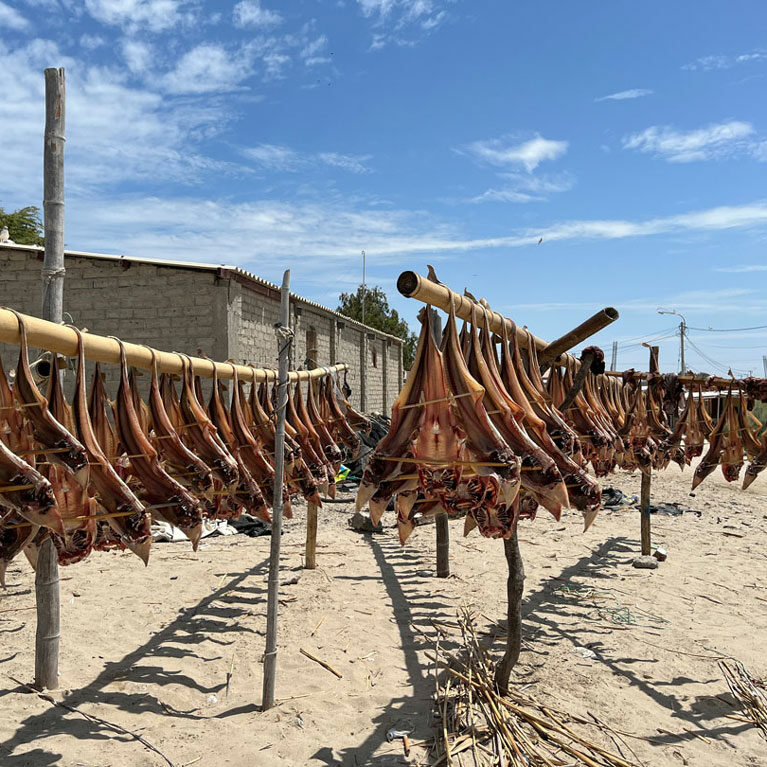Assessment of catch and bycatch of guitarfishes in Peruvian waters
Elizabeth is visiting the ports and fish landing sites of twelve ports in Peru. She records and collects samples as the fishers unload their catches, searching for guitarfishes. Elizabeth is keen to work with the natural curiosity of the fishers who want to know more about her work and use these interactions to get more information and involve fishers in this research. This way, her project can provide an understanding of how and where guitarfishes are being caught along the Peruvian coast.
My first experience of marine species was when I was a child. I saw a sticker placed on my refrigerator that showed a dolphin with a cross and a message that said ‘Don’t eat muchame‘. It took me several years to learn what ‘muchame‘ meant, which refers to a way of preparing dolphin meat in Peru. It was wonderful how this little message made me wonder about other marine species that were not as charismatic as dolphins. My curiosity and the desire to learn more about marine species every day led me to study a career in science and fisheries...
Assessment of catch and bycatch of guitarfishes in Peruvian waters
The aim of this project is to record information about the fishery and trade of guitarfish in Peru and to find out which species are involved so that they can be effectively managed.
The National Plan for the Conservation and Management of Elasmobranchs in Peru is in the process of being reviewed and implemented. However, we know little about guitarfish and although landings of guitarfish species remain low, these elasmobranchs play an important role in the ecosystem. Moreover, it has not been confirmed how many species are involved and this information is necessary for management measures. Our research aims to fill this gap and contribute to the conservation of the guitarfish species involved.
Peru has registered five species of guitarfish. According to the IUCN Red List of Threatened Species, four of them are listed as Data Deficient and one as Near Threatened. Guitarfish are caught mainly during the southern summer by fishers working along the Peruvian coast. These species have been eaten from ancient times to the present day, and guitarfish is one of the most requested traditional dishes in northern Peru. However, although the literature identifies the presence of five species in Peru, we do not know the species that are caught by fishers or whether the current level of landings is affecting guitarfish populations. Data gaps relating to the correct identification of guitarfish and which species are being caught make it difficult to apply adequate fisheries management. Therefore this project aims to generate a baseline for the correct identification and fisheries data of guitarfish, so that they can be incorporated into the National Action Plan for the Conservation and Management of Sharks, Rays and Related Species in Peru (NAP Peru). It also aims to study future trends so that decision-makers can address the problem and propose fisheries management measures to ensure the fishery is sustainable. However, the trade in guitarfish provides economic income to artisanal fishers at several locations, so any conservation measures proposed also need to take into account the effects that may follow for humans.
- to characterise the artisanal fishery (fleet size, types of gear, fishing areas, etc.) of guitarfish species in the major landing ports of the Peruvian coast;
- to identify and collect biological information (meristic data, sex ratio and size composition) of guitarfish species landed;
- to describe the value chain and consumption preferences of guitarfish species.


